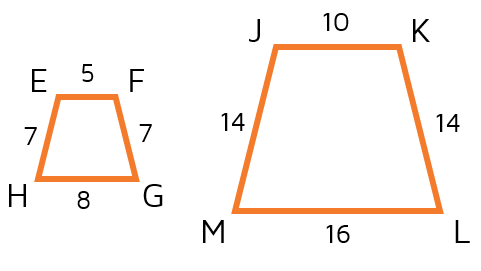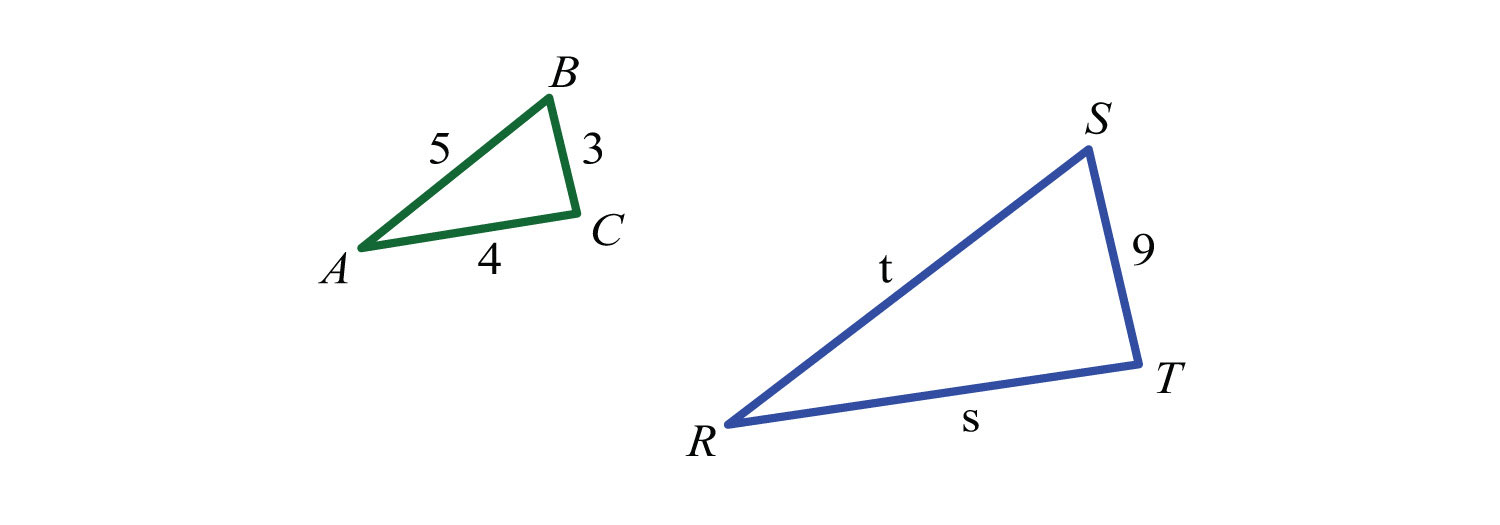To "flip" a figure.
Reflection
True or False? Dilations always make a figure smaller.
False
Is a dilation of 1.5 an enlargement or reduction?
Enlargement (Gets bigger)
Draw an example of similar rectangle.
What were we learning about this week?
Dilation
To "slide" a figure.
Translation
A dilation might change the size of a figure's side lengths but never the _______.
angles
What transformations can be used to prove similarity.
List them all!
1) Translations
2) Rotations
3) Reflections
4) Dilations
These two triangles are similar. Find the Value of a/b.
a/b = 1.5
The sum of all interior angles in a triangle will always equal this number.
180^o
To "turn" a figure.
Rotation
Dilations always produce ___________ figures.
similar
If the scale factor is greater than 1 (ex:2) then the dilated image is ______________ from the original figure.
Enlarged
Congruent figures are _____ similar.
(sometimes, always)
always
Similar or not similar?
Not similar - angles are not the same.
Describing a translation requires these two things.
1) Direction
2) Distance
Dilations need these two things.
1) Center Point of Dilation
2) Scale Factor
If the scale factor is less than 1 (ex:1/4) then the dilated image is ____________ from the original figure.
Reduced
Similar figures are ____ congruent.
(sometimes, always)
sometimes
Find the scale factor. Figure EFGH is the original.

Scale factor = 2
Describing a rotation requires these three things.
1) Center (Point)
2) Rotation angle (Degrees)
3) Direction (Clockwise or Counterclockwise)
How will dilating a figure with a scale factor of 1/3 change a figure? How many times bigger or smaller will it get?
It will make the figure 3 times smaller from the center of dilation.
Dilations can result in a congruent figure if their scale factor is this number.
1
These two triangles are similar. Find the missing side lengths.

s=12
t=15
What is the value of X and Y when the scale factor is 1/4?

Y= 9 (36x1/4) or (36/4)

